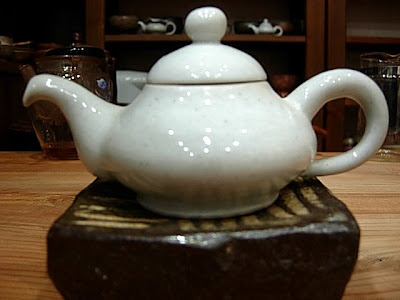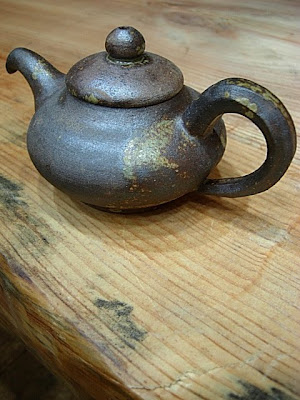In a sleeper berth from Calcutta to Siliguri a young enthusiastic Indian man raved on and on about Makaibari Estate and its famed owner/manager, Rahja Banerjee. He boasted, “The silver tips grown at Makaibari fetched the highest price in the world.”
Yes, Indians are quite proud of this one, and so they deserve to be. Mr. Banerjee is a celebrity in this neck of the woods, pioneering organic methods of farming back when most didn't know what 'organic' even meant.
Months after that enthusiastic conversations with that Indian gentleman clearly excited about tea, one drinks not the famed sliver tips first flush, but the classic more rounded standard 2nd flush. This sample came in a sampling pack from kind Mr. Lochan of famed Lochan teas. One recommends ordering the free sampler as it is filled with a diverse offering of teas from the top Darjeeling estates.
This is the first of two 2nd flush samples from Makaibari. It's dry leaves, with a good density of hairy buds, flaunt light, playful musketal with a distinct oxidized, light raisin odour.
When prepared in long infusions the result is a tea with a flowery musketal taste that is whisked away by touches of sweetness followed by an oxidized fullness. Mouthfeel is dry and all coating. Oxidized raisin notes trail off after a short time on the breath.

Another long infusion waters things down a bit. It offers a quick glimpse of juicy fruit before soft notes of oxidized raisin pair with fullness in the mouth.
Pushing it too a third long infusion, the initial blast of flavour is merely a flicker under gritty, dirty, dry suppression.
When one brews this tea using shorter infusions, gong fu style, the evolution of flavour can be better appreciated.
In the very early hours of the morning, one brews it this way...
The sound of water abruptly coming to a boil breaks the dark morning silence. Leaves go where leaves go. Hot water where hot water goes.


The first sips point at a raisin taste that evolves into grape as sweetness pulls through the mouth. As that sweetness retreats, the raisin taste comes into prominence once more. The feeling in the mouth moves from juicy to dry in aftertaste. The qi is darting, but as gentle as black tea is capable of.

Later infusions bring much sweeter, round flowery grape. The raisin is gone, if not just faintly noticeable in the aftertaste. A mild musketal develops but is felt throughout the taste progression.

Slowly as the session progresses, that dry musketal tone begins to eclipse gritty grape. The gong fu session is short but rewarding and it doesn't take long before this tea winds down with flavour that gradually tails off without offending.
Peace

































